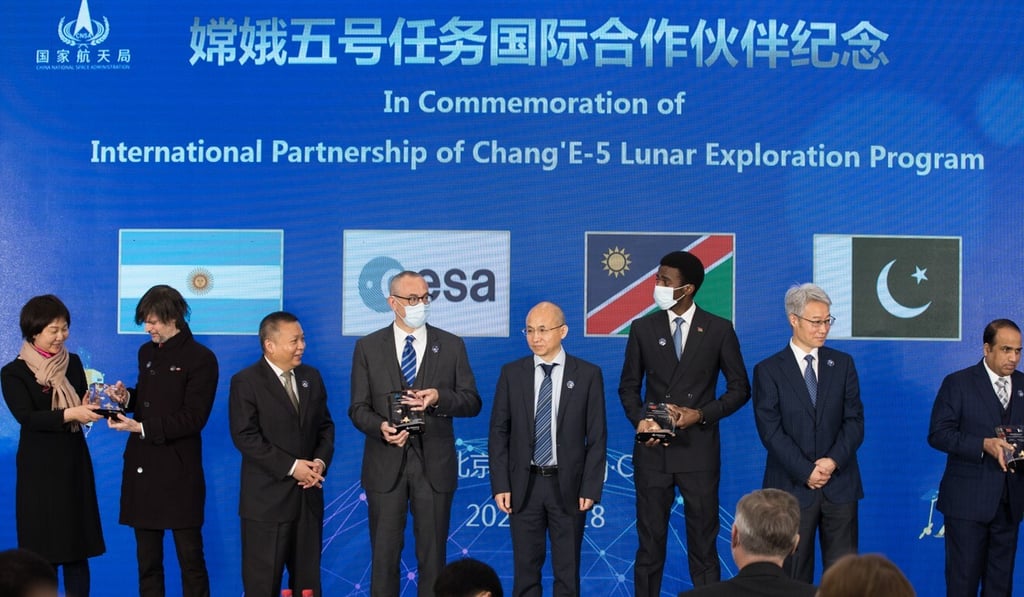China space agency invites international research on Chang’e 5 moon rocks
- The National Space Administration’s regulation on how samples will be managed encourages global scientific cooperation
- Foreign diplomats visit facilities and overseas agencies thanked for their help in tracking lunar probe

The China National Space Administration released a new regulation on Monday which said it “encourages international joint research work on space science based on the lunar samples”. Foreign diplomats were given a tour of the storage and research facilities for the samples, set up last month by the National Astronomical Observatories (NAO).
The space agency also awarded commemorative plates to its counterparts in the European Union, Argentina, Pakistan, as well as the Namibia Ministry of Higher Education, Training and Innovation, for their tracking support and collaboration in the Chang’e 5 mission.

The Chang‘e 5 probe completed a 23-day space mission in December and returned with the first moon samples in 44 years – the third country to do so, after the US and the Soviet Union. The latest 1,700 grams (3.74lbs) of rocks and dust were taken from a younger rock surface, which scientists hope will reveal information about the moon’s recent history.
Pei Zhaoyu, deputy director of the agency’s Lunar Exploration and Space Engineering Centre, said international cooperation had featured in China’s lunar mission as well as its Mars exploration and satellite project.
Pei said the country’s future lunar and interplanetary exploration missions would be more open, and further international cooperation would be encouraged.